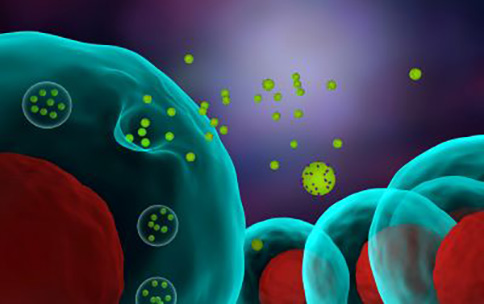
Researchers now know that some RNA (called extracellular RNA or “exRNA”) can be released by cells and transported through the body, sometimes influencing the function of a recipient cell. During travel through the body, exRNA is packaged and protected within “carriers,” called extracellular vesicles (EVs) or in non-vesicles complexes. Understanding how and which types of exRNAs get packaged into different carriers holds potential not only for understanding basic cell biology but also for diagnostic and therapeutic strategies and is a focus of the Common Fund’s Extracellular RNA Communication Program.
Extracellular vesicles (EVs) produced by cancer cells are particularly variable in size and contents, which makes understanding their function in intercellular communication or usage as clinical biomarkers challenging. Researchers supported by the Common Fund program recently studied the contents of different size EVs generated from mouse cancer cells and non-cancer cells to learn more. They used membranes with different sized pores to separate large-, medium-, and small-sized vesicle samples, and an even smaller non-vesicle complexes fraction from different cell types. They found that different sized vesicles carried distinct types of RNA. They also found similarities in the protein content based on the size of the vesicle versus the type of cell it came from. Using special techniques to examine single vesicles they also found that specific surface proteins were only present on EVs of certain sizes.
This study offers a glimpse of the complicated molecular and physical landscape of EVs, but higher resolution and better methods are needed. The work also suggests that by combining vesicle size and content information, it may be possible to know more about their cellular origin. The Extracellular RNA Communication program, now in a second stage, will build upon this knowledge to develop improved approaches to sort, separate, and isolate individual carriers.
Physical and Molecular Landscapes of Mouse Glioma Extracellular Vesicles Define Heterogeneity. Gyuris, A., J. Navarrete-Perea, A. Jo, S. Cristea, S. Zhou, K. Fraser, Z. Wei, A. M. Krichevsky, R. Weissleder, H. Lee, S. P. Gygi and A. Charest. Cell Reports. June 25, 2019. 27(13): 3972-3987 e3976.


